Understanding the Gender Divide in Cosmetic Surgery
Cosmetic surgery continues to be a dynamic field reflecting deep-rooted gender differences in patient demographics, motivations, and professional representation. This article explores comprehensive statistics and research findings that illuminate how gender shapes participation, attitudes, and outcomes in cosmetic surgery globally. By examining demographic data, motivations, cultural influences, and professional disparities, we aim to provide a thorough understanding of the evolving landscape of gender in aesthetic medicine.
Global Landscape: Gender Distribution in Cosmetic Surgery Patients
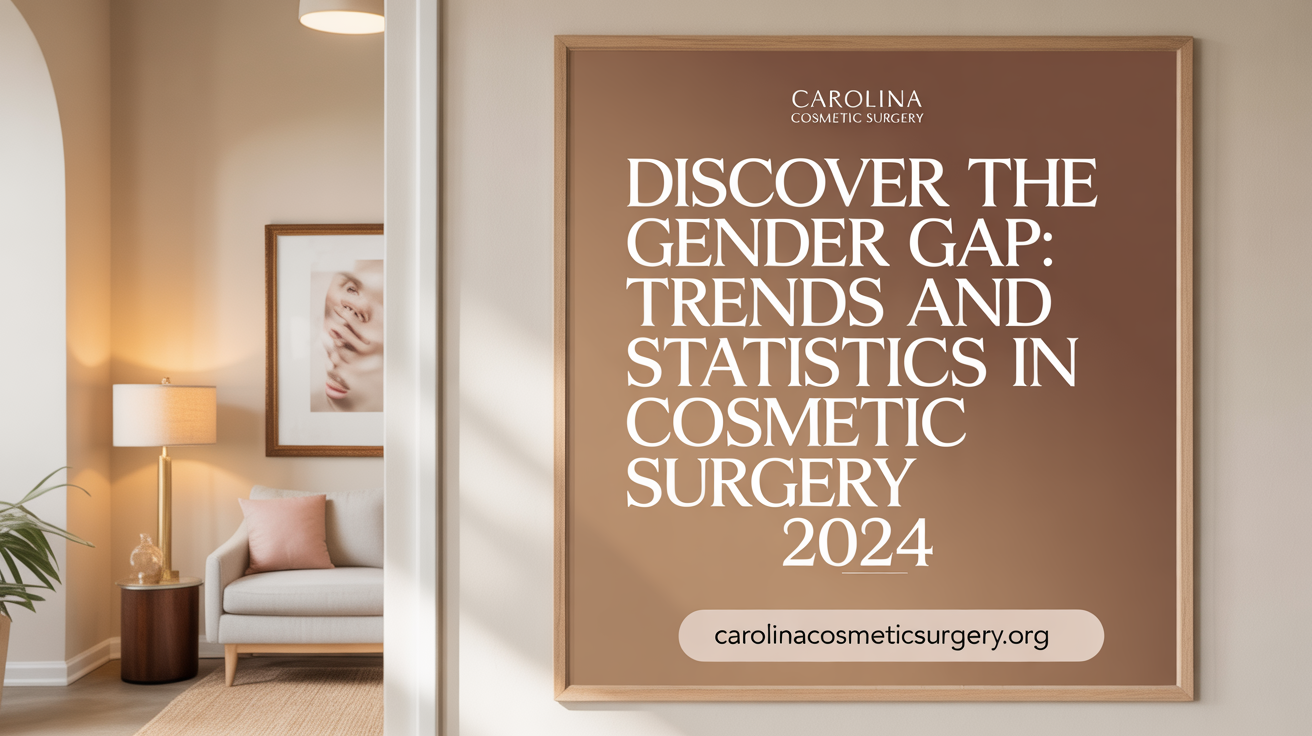
What are the key statistics and research findings related to gender differences in cosmetic surgery?
Research reveals notable disparities between men and women seeking cosmetic procedures globally. Women dominate in this field, accounting for approximately 86.5% to 90.6% of all cosmetic surgery patients worldwide in 2024. The most popular procedures, such as breast augmentation, liposuction, and rhinoplasty, are overwhelmingly performed on women, especially those aged 18 to 34.
Despite women constituting the vast majority of users, the number of men undergoing cosmetic procedures has seen a gradual increase. In 2024, male participation rose slightly from 14.3% in 2023 to 16.1%, reflecting growing acceptance and changing trends.
Age influences the pursuit of cosmetic surgery, with younger adults (particularly those in their 20s and 30s) being the most active demographic. Women in this age group often seek procedures to enhance appearance and address social or personal motivations. Meanwhile, men tend to pursue treatments like botulinum toxin and laser hair removal, with facial aesthetics being a primary focus.
Geographically, the United States, Brazil, and Germany lead in cosmetic surgery volume. Women are more represented overall, but recent data indicates rising participation from men in these countries, influenced partly by media and social acceptance.
Trends Over Yearly Periods
| Year | Female Patients (%) | Male Patients (%) | Main Procedures | Notes |
|---|---|---|---|---|
| 2018 | > 85% | ~14% | Breast augmentation, liposuction, rhinoplasty | Consistent female dominance |
| 2023 | ~87% | 13% | Botox, fillers, liposuction | Slight increase in male procedures |
| 2024 | 86.5%–90.6% | 14.3%–16.1% | Varied, with liposuction and botulinum toxin | Continuing growth in male participation |
This data illustrates ongoing gender disparities and evolving acceptance. The presence of women of color is also increasing, improving representation among diverse populations and leading to more culturally tailored aesthetic approaches.
Overall, these statistics highlight a gendered landscape in cosmetic surgery, shaped by societal trends, cultural influences, and ongoing efforts to promote diversity and inclusion within the field.
Most Common Cosmetic Procedures Among Women
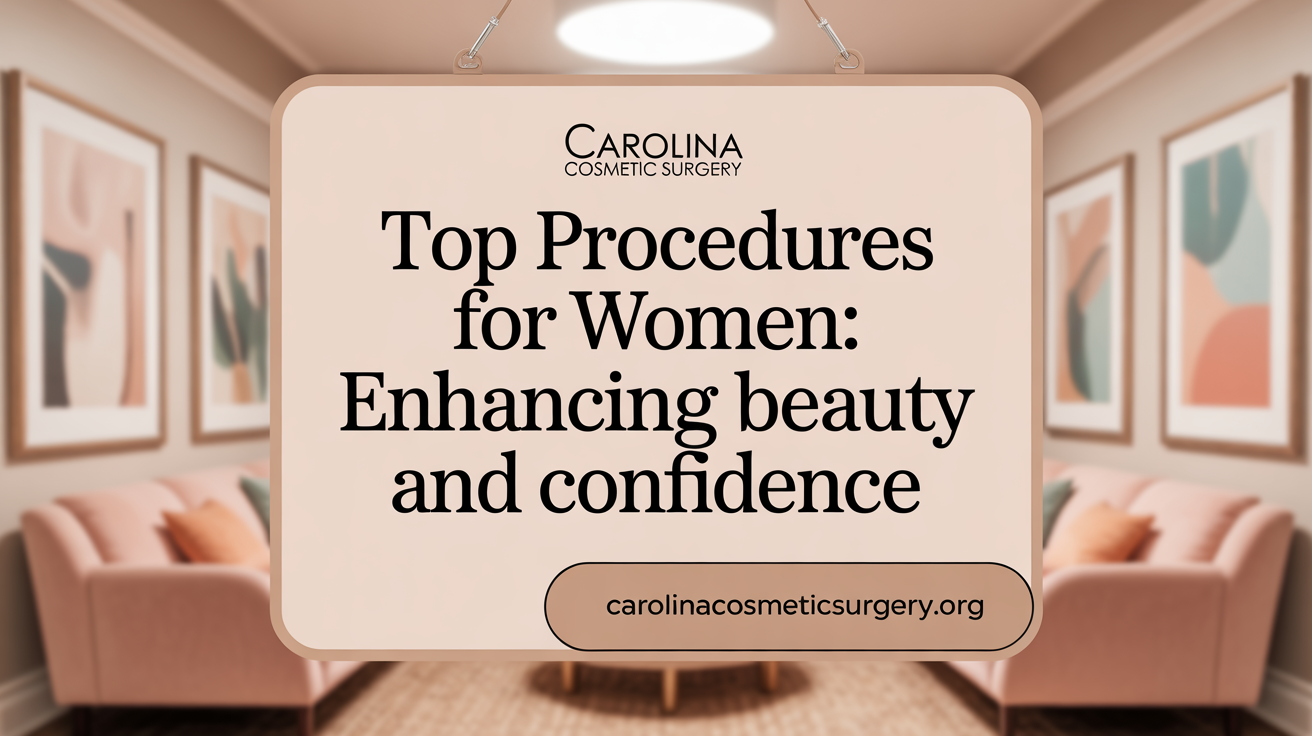
What are the most common cosmetic surgery procedures for females?
Women represent a large majority of cosmetic surgery patients, accounting for approximately 86.5% to 90.6% of all procedures worldwide. The most popular surgeries among women include breast augmentation, liposuction, rhinoplasty, eyelid surgery (blepharoplasty), and facelifts. Breast augmentation is especially prevalent, with around 2.2 million surgeries performed globally in 2023, and it remains a top choice for women aiming to enhance body shape.
Liposuction is another frequently sought procedure, with over 2.3 million surgeries in 2023, making it the most performed surgical procedure worldwide. It is favored for body contouring and addressing stubborn fat pockets. Rhinoplasty, commonly called nose reshaping, and blepharoplasty, which improves eyelid appearance, are also highly desired, often to improve facial harmony and rejuvenate looks.
In addition to these, tummy tucks (abdominoplasty) and breast reduction are common procedures for women seeking both aesthetic improvements and health benefits.
Trends indicate that women are increasingly opting for both surgical and minimally invasive procedures like Botox and fillers, with the latter being recognized by over 70% of respondents in survey data. Overall, these procedures cater to women's desires for improved appearance, confidence, and sometimes functional benefits.
| Procedure | Estimated Annual Surgeries | Main Purpose/Notes |
|---|---|---|
| Breast augmentation | ~2.2 million | Increase breast size, shape |
| Liposuction | ~2.3 million | Body contouring, fat reduction |
| Rhinoplasty | Hundreds of thousands | Nose reshaping for harmony and function |
| Blepharoplasty | Hundreds of thousands | Eye appearance, reduce eyelid droop |
| Tummy tuck (Abdominoplasty) | Thousands | Flatten stomach, remove excess skin |
These procedures highlight women’s priorities in aesthetic enhancement, with technology and cultural trends fueling their popularity.
Popular Cosmetic Surgery Procedures Among Men
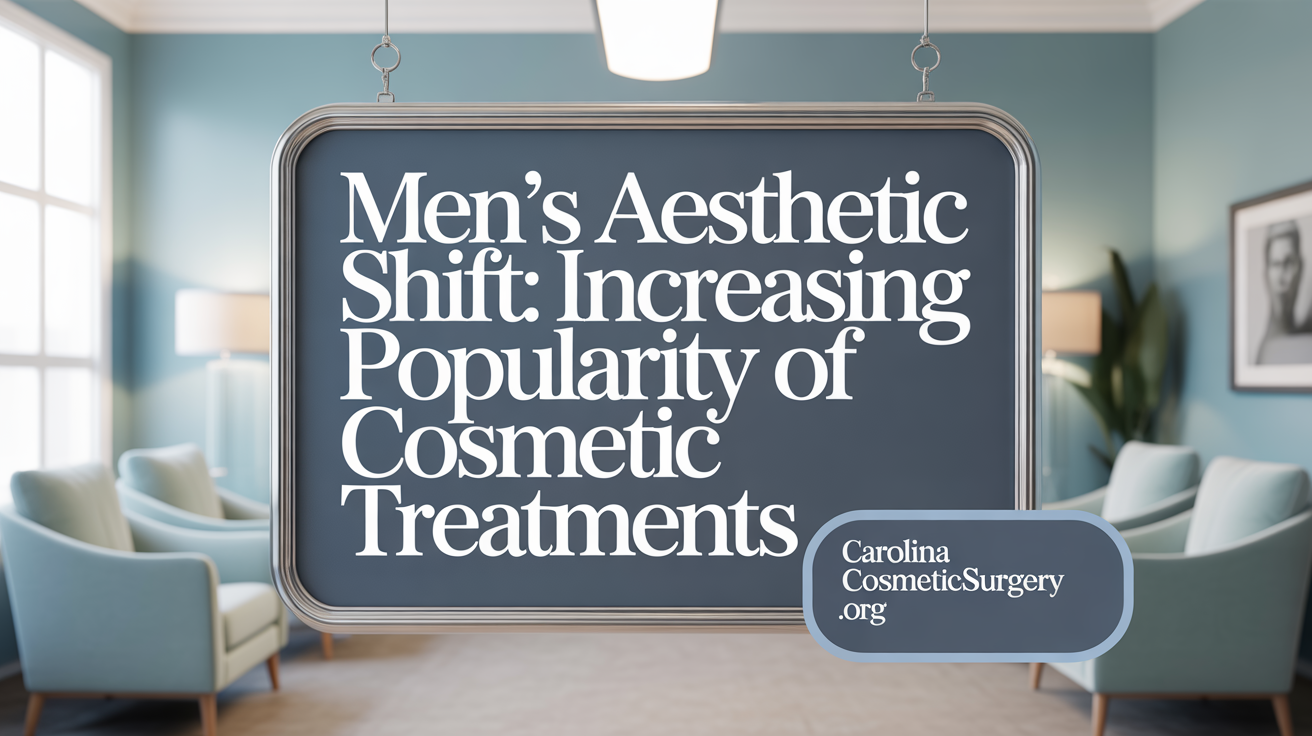
What are the most common cosmetic surgery procedures for males?
Men are increasingly exploring cosmetic procedures to enhance their appearance, with some procedures growing significantly in popularity.
The most prevalent surgical procedure among men is rhinoplasty, commonly known as nose reshaping. This procedure helps improve nasal aesthetics and function. Gynecomastia surgery, or male breast reduction, is also highly sought after to address enlarged breast tissue, creating a more masculine chest contour.
Eyelid surgery, or blepharoplasty, is another popular choice, particularly to combat the appearance of sagging eyelids and eye heaviness. Liposuction for body shaping remains a top procedure, focusing on waist, abdomen, and flanks.
Besides surgical options, hair restoration procedures such as hair transplants are highly in demand due to male pattern baldness. These help restore hairline density and overall hair volume.
Non-surgical treatments are also widely adopted. Neuromodulators like Botox are used to reduce wrinkles and fine lines, especially on the forehead and around the eyes. Facial fillers are preferred for facial volume and contour corrections.
Rise in minimally invasive treatments among men
Since 2000, the number of minimally invasive cosmetic treatments performed on men has increased dramatically, by about 72%, totaling over 1 million cases.
Procedures such as Botox, laser hair removal, microdermabrasion, and chemical peels are among the favorites. Neuromodulators have seen the largest growth, with a 381% increase, reflecting men's preference for quick, less invasive options.
Trends in hair restoration and body contouring
Hair transplants remain a leading non-surgical option, especially among men aiming to combat hair loss.
Body contouring procedures like liposuction are frequently performed to achieve a more sculpted physique. As technology advances, minimally invasive techniques that provide safe, effective results are becoming standard.
In summary, male cosmetic surgery encompasses a variety of procedures targeting the face, chest, and body, with a notable trend toward non-surgical and minimally invasive treatments.
Gender Disparities in Cosmetic Surgery Participation and Practice
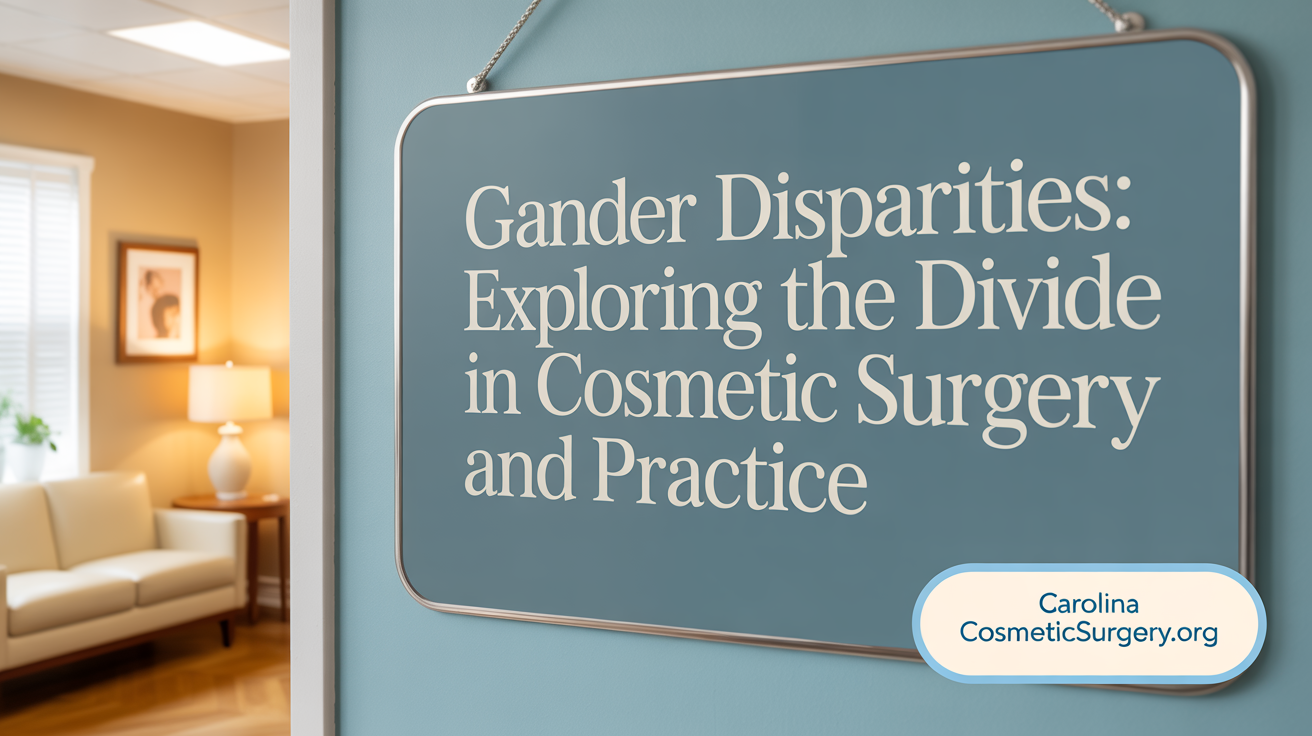
What disparities exist in the prevalence of cosmetic procedures between genders?
There are clear gender differences in the field of cosmetic surgery. About 87% of all cosmetic procedures worldwide in 2024 are performed on women, demonstrating a significant gender gap in pursuit of aesthetic enhancements. While women extensively seek these procedures, they make up only about 14% of practicing plastic surgeons, highlighting a disparity between patient demand and provider representation.
The profession itself continues to be predominantly male, with women facing barriers such as pay disparities, underrepresentation in senior roles, and limited leadership opportunities. For example, women hold around 38% of faculty positions in academia but are underrepresented in leadership roles and senior ranks.
Conversely, the increasing number of women entering residency programs in plastic surgery, which now approaches gender parity at nearly 50%, indicates ongoing progress. Most women plastic surgeons are relatively early in their careers and have fewer years of practice compared to their male counterparts. Despite this, women are more likely to have had personal experience with procedures their patients seek, which can foster trust and provide unique insights in their practice.
The demographic landscape of cosmetic surgery also reflects smaller yet growing participation among men. Procedures like hair transplants and neuromodulator treatments have seen a 72% increase in male patients since 2000, demonstrating changing attitudes and acceptance among men.
Overall, while women dominate the cosmetic procedure landscape as patients, the profession remains gender-imbalanced, with ongoing efforts aimed at achieving more equitable representation and leadership for women in plastic surgery.
Motivations and Attitudes Driving Gender Differences
What are the motivations, attitudes, and reasons behind gender-based decisions in cosmetic surgery?
Gender influences the reasons why individuals choose to undergo cosmetic surgery, shaped by cultural, psychological, and social factors. Women often constitute the bulk of cosmetic surgery patients, with about 92% of procedures performed on females in 2023. Their motivations typically center around enhancing youthful appearance, reducing signs of aging, and addressing dissatisfaction with body image. Media exposure and societal beauty norms heavily influence these desires, encouraging women to pursue procedures like Botox, fillers, and breast augmentations to meet aesthetic ideals.
Men, on the other hand, represent a smaller but growing segment of cosmetic surgery. Their motivations differ somewhat, with many seeking procedures for functional reasons or to address specific concerns such as eye heaviness or social embarrassment. For example, among men, blepharoplasty is often motivated by eye heaviness and the desire to look more alert or youthful, but only a minority pursue surgery purely for aesthetic reasons.
Attitudes toward cosmetic procedures also vary. Women tend to be more accepting and knowledgeable about various treatments, with surveys indicating higher awareness and more positive attitudes. Men’s decisions are often driven by social or functional considerations rather than aesthetic ideals, though the trend of increasing male participation shows shifting attitudes.
Social media plays a meaningful role in shaping these decisions. Higher engagement correlates with increased acceptance and desire for cosmetic procedures, particularly among young women influenced by images of cosmetic enhancement.
How do age-related trends influence motivations?
Younger individuals, especially women aged 25–30, often seek procedures driven by social embarrassment or marriage considerations. In contrast, women in their 30s and 40s prioritize youthful rejuvenation, seeking to look younger for personal or professional reasons. Similarly, men's motivations also evolve with age, focusing more on functional improvements or appearance-related concerns as they age.
Overall, these gender-specific motivations and attitudes reflect broader social norms and individual perceptions of beauty, health, and aging. Recognizing these differences helps practitioners tailor their approaches, ensuring treatments align with patients' individual motivations and cultural contexts.
Cultural and Societal Impacts on Gender Differences in Aesthetic Surgery
Variations in aesthetic preferences by region and ethnicity
Cultural and societal influences greatly shape aesthetic preferences across different regions and ethnic groups. For example, Koreans often prefer larger foreheads and fuller lips, while Japanese beauty standards favor a broader outline of the eyebrow arch. In the United States, non-Hispanic White individuals are more commonly represented among cosmetic surgery patients, but the demand among African Americans, Hispanics, and Asians is increasing rapidly.
These regional and ethnic differences influence which procedures are popular and what features are considered attractive, leading to distinct beauty norms worldwide.
Role of cultural beauty standards on gendered surgery demand
Cultural standards dictate specific ideals of beauty that influence the demand for aesthetic procedures among men and women. Women are more likely to pursue surgeries aimed at enhancing youthfulness, such as facelifts, Botox, and fillers, driven by societal expectations for female beauty.
Men, on the other hand, are increasingly seeking minimally invasive procedures like neuromodulators (e.g., Botox for men) and hair transplants to maintain a youthful yet masculine appearance. These differences are shaped by gender norms emphasizing femininity and masculinity within different cultures.
Influence of social media and celebrity culture
Social media platforms play a pivotal role in defining beauty standards and shaping perceptions about cosmetic surgery. Exposure to images of celebrities and influencers, many of whom showcase aesthetic enhancements, increases awareness and acceptance of procedures.
Higher social media engagement correlates with a greater desire for cosmetic treatments. Young women, in particular, report higher body dissatisfaction after viewing enhanced images online, which can fuel their pursuit of procedures like fillers or rhinoplasty.
How cultural context modifies gender attitudes toward surgery
Cultural context influences how gender attitudes towards cosmetic surgery are formed and expressed. In some countries like Japan, negative attitudes towards aesthetic procedures are more prevalent, whereas in the US, acceptance is higher. Moreover, cultural beauty standards can lead to gender-specific perceptions of acceptable procedures and outcomes.
For instance, men might opt for procedures that enhance masculinity, such as jawline contouring, while women may focus on facial rejuvenation. These preferences are rooted in deeply held cultural views about gender roles and beauty norms.
| Region | Popular Procedures | Cultural Influences | Attitudes Towards Surgery |
|---|---|---|---|
| South Korea | Double eyelid surgery, lip fillers | Emphasis on youthful, flawless skin | Highly positive, per capita highest |
| United States | Breast augmentation, rhinoplasty | Media-driven ideals of youthful, slim figures | Generally accepting, diverse views |
| Japan | Facial contouring, eyelid surgery | Traditional norms favor subtle enhancements | More conservative, mixed attitudes |
| Brazil | Buttock augmentation, liposuction | Preference for curvaceous bodies, cultural celebration of body | |
| Nigeria | Lip fillers, skin lightening | Cultural importance on beauty and status | Increasing acceptance |
The global trends in aesthetic surgery highlight how cultural and societal norms influence gendered preferences and attitudes, with media and celebrity culture playing a powerful role. These influences help explain the variation in procedures sought and the acceptance levels across different populations.
Gender Gap in the Plastic Surgery Workforce
Why are most plastic surgeons male?
Despite nearly half of all medical school graduates being women, the field of plastic surgery is still predominantly male. This imbalance results from a variety of enduring barriers and societal factors. Women often encounter workplace discrimination and unequal pay, which can undermine their career development.
Furthermore, issues related to pregnancy and family responsibilities pose additional challenges, making it harder for women to sustain continuous, lengthy surgical training and practice. Historically, a lack of female role models and limited leadership opportunities have also contributed to fewer women entering and remaining in the specialty.
Efforts such as mentorship programs, female-focused conferences, and organizations like the ASPS Women Plastic Surgeons Forum and the LIMITLESS Leaders program are working to bridge this gap. Although these initiatives foster support and encouragement, overall progress remains gradual. Structural, cultural, and institutional factors continue to influence the slow pace of change, highlighting the need for ongoing efforts to promote gender equality within plastic surgery.
Women’s participation in training versus practicing surgeons
While women represent about 50% of medical school graduates, only around 14% of practicing plastic surgeons are female. Conversely, women comprise over 50% of plastic surgery residents, indicating that many are entering the field but may face obstacles in advancing to senior, leadership, or academic roles.
In academia, women hold approximately 38% of faculty positions but are underrepresented in higher academic ranks and leadership positions. Research shows women surgeons tend to have fewer years of practice, lesser scholarly output, and slower promotion rates than their male counterparts — factors that contribute to the persistent gender disparity.
Challenges women face in academic and leadership roles
Women in plastic surgery confront obstacles such as lower representation in senior ranks and less visibility at professional conferences. They often publish less in scientific journals and receive less access to research funding, including NIH grants.
These disparities can be partly attributed to fewer years of practice and slower career progression. Additionally, societal expectations and work-life balance challenges further discourage women from pursuing or maintaining leadership roles.
Programs supporting female plastic surgeons
To promote gender parity, organizations have developed initiatives like the ASPS Women Plastic Surgeons Forum and the LIMITLESS Leaders program. These programs aim to provide mentorship, leadership training, and networking opportunities for women in the field.
Such efforts are crucial for fostering an environment where women can thrive professionally, advance in leadership positions, and influence the future direction of plastic surgery. While progress is evident, continuous support and policy changes are necessary to overcome longstanding barriers and close the gender gap in this specialized medical field.
The Impact of Female Surgeons’ Personal Experience on Practice
Female surgeons’ personal cosmetic surgery history
Many female plastic surgeons share that their own experiences with cosmetic procedures deepen their understanding of what patients seek. Since women are predominantly the ones pursuing cosmetic treatments—comprising about 86.5% to 90.6% of all procedures worldwide—the shared journey can foster a more empathetic approach.
How shared experiences influence patient trust
When surgeons have personal insights into cosmetic surgery, it often translates into stronger trust with patients. Female surgeons who have undergone similar procedures can better address concerns and set realistic expectations, which are vital for patient satisfaction.
Effect on patient outcomes and satisfaction
The ability to empathize and connect with patients might lead to improved outcomes. Patients tend to feel more comfortable and understood, which can influence their overall satisfaction and confidence in the surgeon's recommendations.
Representation of women of color in surgery
Women of color are underrepresented in plastic surgery, but their presence is crucial for representing diverse patient needs. Surgeons from varied backgrounds can offer culturally sensitive care, and their personal experiences with aesthetic ideals across different cultures can enhance patient rapport.
| Aspect | Impact | Explanation |
|---|---|---|
| Personal experience | Builds trust and empathy | Surgeons with personal procedures can relate better to patients' concerns |
| Patient trust | Increased confidence in surgeon | Shared experiences validate patient feelings |
| Patient satisfaction | Improved outcomes and adherence to post-op care | Greater understanding leads to tailored treatment plans |
| Diversity and representation | Better service to diverse populations | Women of color bring cultural insights and foster inclusivity |
This integration of personal experience and diverse representation continues to shape a more compassionate, effective, and inclusive field of plastic surgery.
Age and Its Role in Gendered Cosmetic Surgery Trends
How does age influence the acceptance of cosmetic surgery among different genders?
Age plays a significant role in the willingness to pursue cosmetic procedures. Suprisingly, some studies show that older individuals tend to be more open to undergoing cosmetic surgery. For women, the desire to look younger often peaks in their 30s and 40s, with nearly half of procedures in this age group. Men, on the other hand, show an increasing interest in minimally invasive treatments like Botox and laser hair removal as they age.
Are there specific procedures preferred by men and women at different ages?
Women primarily seek procedures focused on anti-aging, such as facelifts, Botox, and fillers, especially in their 30s and 40s. They also opt for breast augmentation and liposuction. Men tend to prefer treatments like neuromodulators, hair transplants, and eyelid surgeries, with significant growth seen in the last decade. Younger men often pursue non-invasive options, while older males may consider more substantive procedures.
How do life milestones impact decisions for cosmetic surgery?
Major life events like marriage, career changes, or significant birthdays can motivate individuals to seek cosmetic enhancements. For instance, women in their late 20s or early 30s might pursue procedures to align with personal or professional milestones. Similarly, men might opt for treatments to enhance appearance for job advantages or social reasons, especially in cultures valuing youthful looks.
Have attitudes toward cosmetic surgery changed across different age groups?
Attitudes are evolving as older adults become more accepting of cosmetic procedures. Increasing social media influence and media exposure contribute to changing perceptions, making surgery more normalized at different ages. Younger generations tend to see cosmetic procedures as a form of self-expression, while older adults are increasingly viewing them as essential for maintaining a youthful appearance.
| Age Range | Most Common Procedures | Gender Trends | Remarks |
|---|---|---|---|
| 25-35 | Botox, fillers, liposuction | Women prefer anti-aging treatments; men focus on neuromodulators and hair transplants | A period of both self-assessment and milestone celebrations |
| 36-50 | Facelifts, breast augmentation, rhinoplasty | Women seek for rejuvenation; men focus on facial rejuvenation | Heightened relevance of anti-aging procedures |
| 50+ | Eyelid surgery, neck lifts, skin resurfacing | Both genders increasingly pursue procedures to reverse aging signs | Growing acceptance of elective surgeries in seniors |
Advancements in Minimally Invasive Procedures and Gender Uptake
Trends in Botox and fillers by gender
Women dominate the market for cosmetic procedures, accounting for approximately 86.5% to 90.6% of all cosmetic surgery worldwide. Among the minimally invasive treatments, Botox and fillers are particularly popular. In 2023, nearly 9.5 million Botox injections were performed globally, reflecting a significant trend among women seeking quick, non-surgical aesthetic improvements.
While women remain the primary consumers, men are increasingly participating in these treatments. The number of minimally invasive procedures sought by men has risen dramatically — by 72% since 2000 — totaling over 1 million cases annually. Men typically pursue treatments like neuromodulators (e.g., Botox for wrinkle reduction), laser hair removal, microdermabrasion, and chemical peels.
Men’s growing interest in non-surgical enhancements
Men are now engaging more actively in cosmetic procedures, especially non-invasive ones, to address aesthetic concerns such as aging signs and facial rejuvenation. In contrast to women, men are often motivated by different reasons, including social embarrassment and specific features like eye heaviness.
The most common minimally invasive procedures for men include neuromodulators, which saw a 381% increase over ten years, and laser hair removal. These procedures help men achieve a more youthful and refreshed appearance without the downtime associated with surgery.
Comparison in procedural growth rates between genders
Over the past two decades, the growth in minimally invasive procedures has been especially pronounced in men. Procedures like Botox have seen exponential growth, indicating a shift in societal acceptance and the normalization of male cosmetic enhancement.
Women continue to be the predominant demographic, but the increasing participation of men highlights changing beauty standards and a broader acceptance of non-surgical treatments across genders.
Popular minimally invasive procedures for men and women
| Procedure | Gender Focus | Growth or Trend | Additional Info |
|---|---|---|---|
| Botox (Botulinum toxin) | Both | Most common in both genders; significant growth in men | Used to reduce wrinkles and facial lines |
| Fillers | Women | Widely used for facial volume enhancement | Popular for cheeks, lips, and under-eye areas |
| Laser hair removal | Men & Women | Increasing popularity, especially among men | Targeting facial and body hair |
| Liposuction | Women | Among top surgical procedures | Focuses on body contouring |
| Chemical peels and microdermabrasion | Men & Women | Growing demand for skin rejuvenation | Improvements in skin tone and texture |
This trend highlights a shift toward less invasive options, enabling men and women to pursue aesthetic improvements with minimal downtime and lower risks.
The Role of Social Media in Shaping Gender-Specific Cosmetic Surgery Trends
How does social media influence attitudes toward cosmetic procedures?
Social media platforms have significantly impacted perceptions of beauty, especially among women. Images of cosmetic enhancements, influencers showcasing their transformations, and celebrity endorsements have increased awareness and acceptance of procedures like Botox, fillers, and rhinoplasty. This visual exposure fosters a normalized view of cosmetic surgery, encouraging more women to consider such options.
What is the impact on young women’s desire for cosmetic surgery?
Young women are particularly susceptible to social media's influence. Studies show that frequent social media users tend to have higher body image concerns and a greater desire for cosmetic enhancements. Viewing images of enhanced females can subtly increase their motivation to undergo procedures, often driven by comparisons and ideals portrayed online.
Are there gender differences in how cosmetic surgery images are perceived?
Yes, gender differences are evident. Women generally report higher acceptance and desire for cosmetic procedures after exposure to social media imagery. Men, on the other hand, show increasing interest mainly in minimally invasive treatments like neuromodulators and hair removal, but their overall engagement with cosmetic content remains lower.
Is there a link between social media use and the pursuit of cosmetic surgery?
Research indicates a strong correlation between social media engagement and the pursuit of cosmetic procedures. Active users, especially those following many accounts related to beauty and enhancement, are more likely to develop a desire for surgery. This link persists even after accounting for body satisfaction levels, suggesting that social media acts as a direct motivator.
How do these trends influence the cosmetic surgery industry?
As social media continues to shape beauty standards, the demand for both surgical and minimally invasive procedures rises. Clinics and practitioners increasingly harness social media marketing, showcasing before-and-after images and engaging with potential clients. This cycle of visual influence fuels the ongoing growth of the global cosmetic surgery market.
Future Outlook: Moving Toward Gender Parity in Cosmetic Surgery
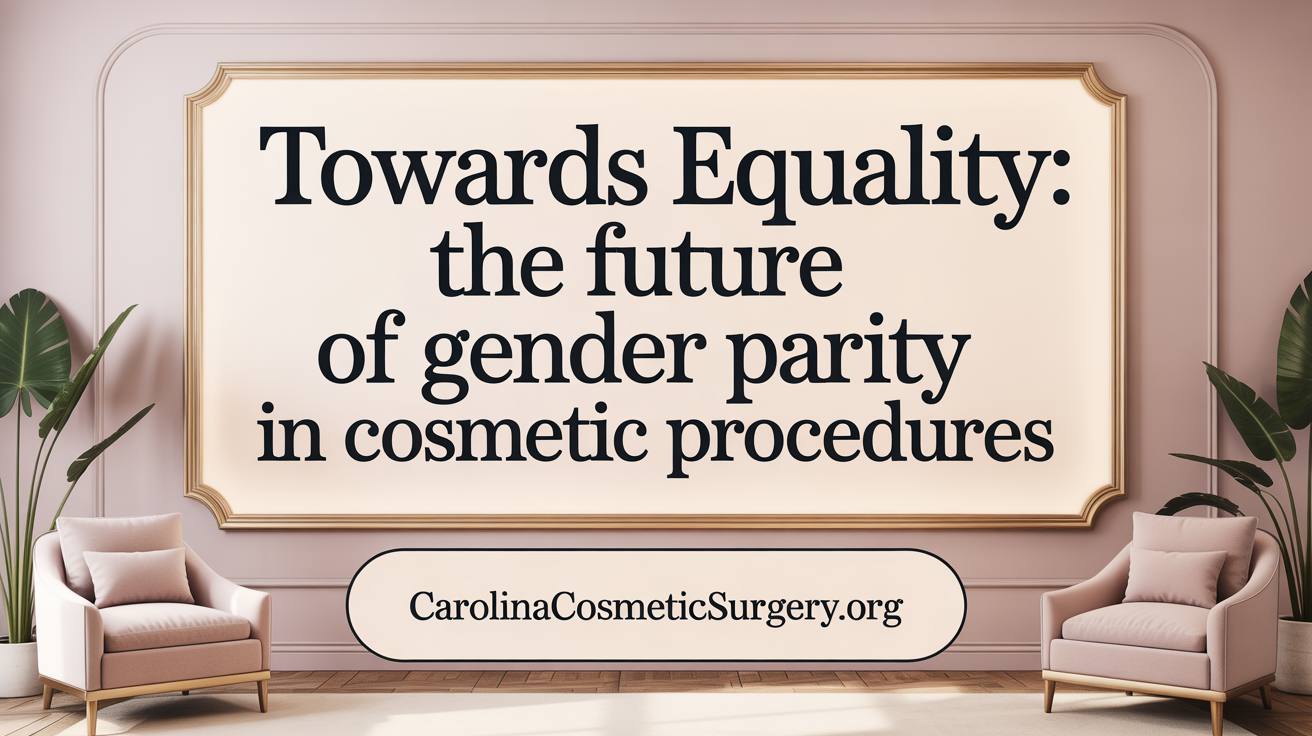
Trends in increasing female plastic surgeon participation
Despite women constituting only 19% of the American Society of Plastic Surgeons (ASPS) membership in 2024, their presence in residency programs is nearly equal to that of men, with 47% of entrants being female. This indicates a promising trend toward greater female participation in the field. Women now make up over half of medical school graduates but still represent only 14% of practicing plastic surgeons, signaling ongoing growth and opportunity. Initiatives like the ASPS Women Plastic Surgeons Forum and the LIMITLESS Leaders program are actively encouraging women to pursue leadership roles, helping to balance gender representation in academic and clinical settings.
Potential erosion of gender disparities in surgery rates
Gender disparities are evident in patient demographics, with women accounting for approximately 86.5% to 90.6% of all cosmetic surgery patients worldwide. A trend of increasing participation among men is emerging, with their share rising from 14.3% in 2023 to 16.1% in 2024. The most popular procedures among men include neuromodulators like Botox, which saw a 381% growth over the past decade. This increase signals a potential shift toward more balanced gender participation in cosmetic procedures, possibly influenced by changing social attitudes and greater acceptance.
Ongoing challenges and actionable steps
Women in plastic surgery face challenges such as pay disparities, underrepresentation in academic leadership, and balancing multiple responsibilities. Addressing these issues requires strategic actions, including promotion of equitable pay, mentorship programs, and policies that facilitate work-life balance. Increasing awareness of gender gaps and actively working to remove barriers can promote a more inclusive environment, ultimately supporting more women in attaining senior academic and leadership positions.
Role of diversity initiatives and leadership programs
Programs like the LIMITLESS Leaders and the ASPS Women Plastic Surgeons Forum are vital in fostering diversity. These initiatives aim to provide mentorship, networking opportunities, and leadership training, which are essential for advancing women into senior roles. Encouraging greater inclusion of women of color in the field can enhance patient representation, particularly among diverse populations. As more women take on leadership roles and diversify the workforce, the field moves closer to a more equitable and representative future.
The evolution of gender participation in plastic surgery reflects both progress and ongoing efforts needed to achieve true parity. With continued support for diversity and leadership initiatives, alongside structural changes to address disparities, the field looks set for a more inclusive future where gender equity becomes the norm rather than the exception.
Bridging the Gap: Toward an Equitable Cosmetic Surgery Landscape
The intersection of gender with cosmetic surgery patient profiles and professional participation reveals complex dynamics characterized by significant disparities and evolving trends. Women dominate as recipients of cosmetic procedures, motivated by a blend of cultural, psychological, and societal factors, whereas men’s increasing participation reflects shifting norms and expanding procedure types. Despite the predominance of female patients, the plastic surgery profession remains male-dominated, facing systemic barriers that hinder gender parity. However, positive momentum marked by increased female residency representation and supportive initiatives underscores a path toward greater equity. Understanding these nuanced gender-based differences and fostering inclusivity within the field promises not only improved patient outcomes but also a more diverse and resilient surgical community in the decades to come.
References
- Achieving gender parity: Women's role in plastic surgery | ASPS
- Demographic and Cultural Differences in the Acceptance and ...
- Gender distribution of surgical cosmetic procedures worldwide
- Plastic Surgery Statistics - American Society of Plastic Surgeons
- Scholarly activity in academic plastic surgery: the gender difference
- Plastic Surgery Statistics & Facts
- Gender and Patient Preferences: Unraveling the Decision-Making ...
- The Male Aesthetic Patient: Preferences and Practice
- Body image and attitudes toward cosmetic surgeries among female ...
- Effects of social media use on desire for cosmetic surgery among ...
